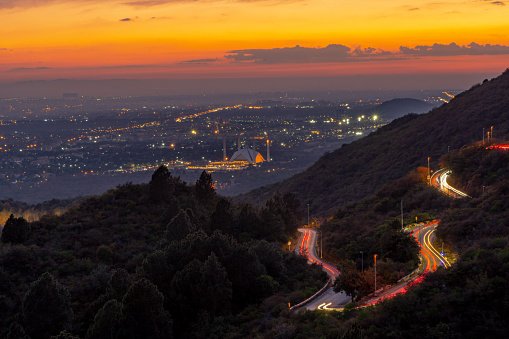Black smoke emitted by traditional brick kilns, as well as from the transport and industrial sectors, is highly polluting and toxic, posing severe threats to public health and environment.
The Federal Capital Territory (FCT) has witnessed a remarkable transformation as 49 out of 63 conventional brick kilns have been successfully converted to environmentally-friendly zig-zag technology.
The initiative, led by the Ministry of Climate Change and Environmental Coordination, aims to alleviate the choking air pollution crisis prevalent in the capital and surrounding regions.
Muhammad Saleem, a senior official from the ministry, revealed that alongside the conversion, four traditional brick kilns have been dismantled, while the remaining ten are in the process of transitioning to the cleaner zig-zag technology.
The traditional brick manufacturing sector has long been identified as a significant contributor to the country’s air pollution and greenhouse gas emissions, relying on dirty energy sources such as coal, rubber, and shoe soles for baking bricks. These practices result in the release of lethal black carbon emissions into the atmosphere.
Saleem emphasized that the conversion to zig-zag technology represents a monumental achievement, with the cleaner brick kilns expected to reduce carbon emissions by 60% and save owners up to 30% on energy expenses.
He underscored the collaborative efforts of the Ministry of Climate Change and Environmental Coordination (MoCC&EC), Pakistan Environmental Protection Agency Islamabad (Pak-EPA-Islamabad), Islamabad administration, and other stakeholders in overcoming various challenges to address the escalating problem of air pollution.
Most of the air-contaminating brick kilns were located in rural areas around the capital, making these regions particularly poised to benefit from improved air quality post-conversion. The traditional brick-making process, known for its adverse health and environmental effects, involves hand-made bricks baked in Fixed Chimney Bull’s Trench Kilns (FCBTK).
This technique, widely used in South Asian countries, including Pakistan, has been identified as one of the most contaminating methods for brick production.
Saleem detailed the environmental damage caused by traditional kilns, emitting pollutants such as sulphur oxides, nitrogen dioxide, carbon monoxide, carbon dioxide (CO2), particulate matter (PM), including black carbon. The latter, a major component of soot from brick kilns, is notorious for being 460 to 1500 times more potent than CO2 in terms of its impact on climate change.
Black smoke emitted by traditional brick kilns, as well as from the transport and industrial sectors, is highly polluting and toxic, posing severe threats to public health and the environment. Saleem pointed out that this black smoke is a leading cause of asthma, respiratory diseases, eye infections, and various lung-related illnesses in humans.
The introduction of zig-zag technology is a strategic move by the federal ministry to address not only the emission of toxic black carbons causing smog but also to combat overall air pollution in the federal capital and its adjoining rural areas. This shift aligns with global efforts to adopt cleaner technologies and promote sustainable practices to safeguard the environment and public health.
As the capital celebrates this significant milestone in the battle against air pollution, it underscores the importance of collaborative efforts and innovative solutions in tackling environmental challenges. The successful conversion of brick kilns sets a positive precedent for other regions to follow suit, contributing to a cleaner and healthier future for communities across the country.
